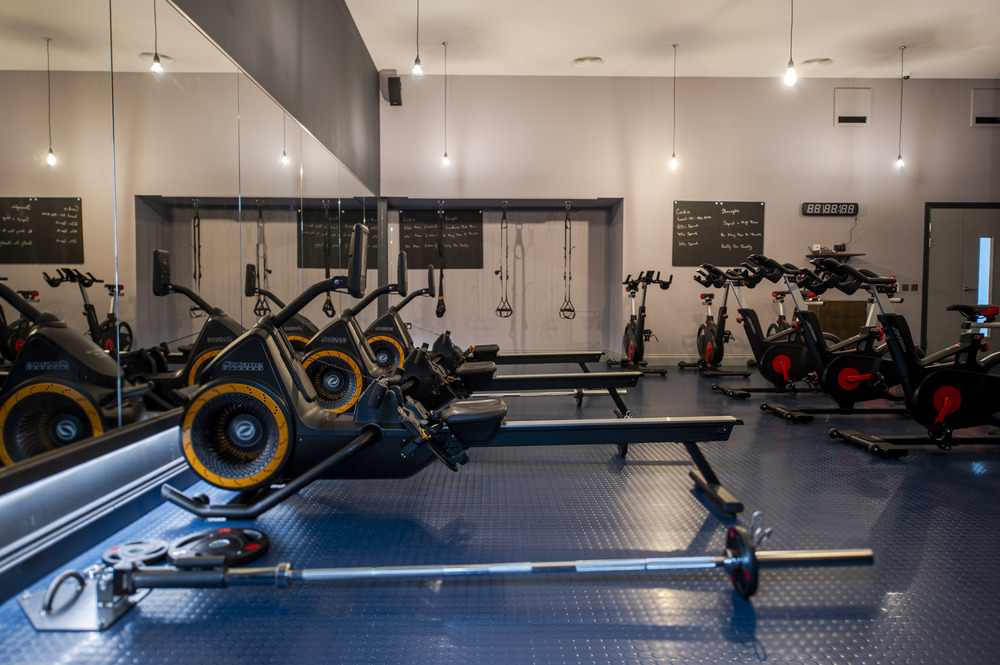Cross-training can have many benefits when you correctly incorporate it into your program.
Fitness and leading a healthy lifestyle are sometimes two of the most challenging objectives you can set for yourself, particularly if your daily calendar is packed with activities.
Nonetheless, sticking to your preferred training regimen can assist you in reaching your fitness goals and reap a number of health advantages.
Once you’ve found a fitness regimen that works for you, the next thing to think about is whether or not combining multiple workout routines has any benefits.
This is called cross-training, a training regimen that can provide several health benefits, both now and in the future.
Let’s have a closer look at cross-training and how this method can help you.
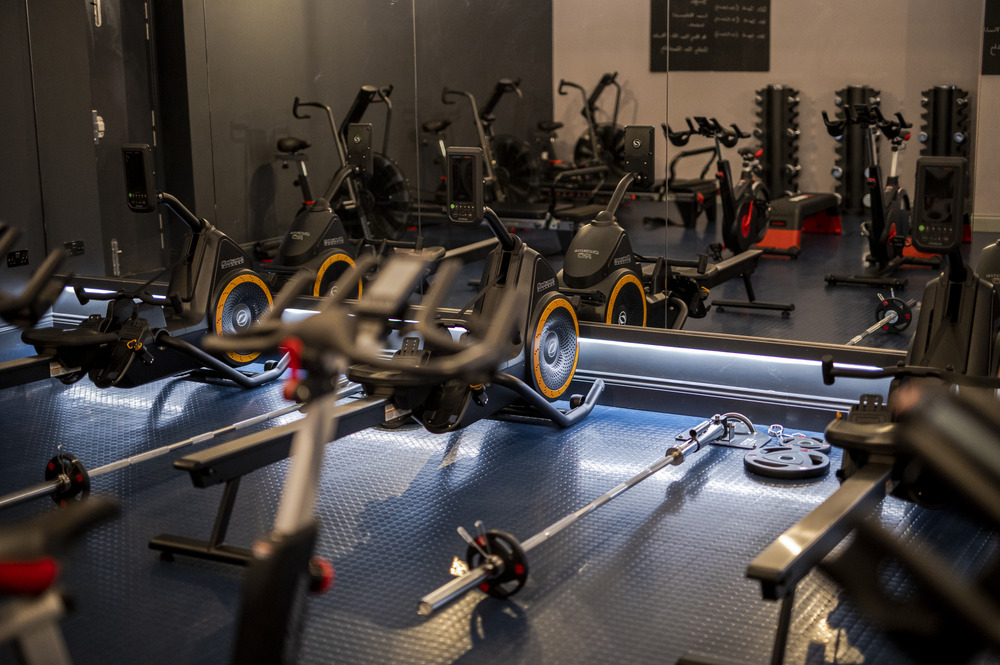
The Advantages of Cross-training
Cross-training is the practice of engaging in a variety of different physical activities or exercises to improve overall fitness rather than focusing mainly on one type of exercise.
Given this definition, many people may have previously engaged in cross-training without even realising it.
Cross-training involves doing several different types of exercise without focusing on the intensity of each one.
This may sound simple enough, but if you aren’t cross-training, you could be setting yourself up for injury or mental burnout.
Cross-training engages more muscle groups, enhances agility, and facilitates participation in a range of exercises so that you don’t become bored by your training regimen.
Engaging in a variety of exercises as part of your training is also an excellent strategy to improve and maintain general fitness.
One of the main advantages of cross-training is the potential to prevent injuries that might be caused by repeatedly using the same muscles or replicating the same exercises.
With this, cross-training can also help to increase your overall performance.
After months of practising the same movements, your body becomes incredibly effective at them.
And although that is excellent for competition, it restricts your total level of fitness and lessens the real conditioning you receive throughout training.
Unlike focusing on one particular type of exercise, a method that maintains a particular level of fitness, cross-training can help you to become stronger and fitter over time.
By engaging in a range of exercises, cross-training can allow you to build up different muscle groups, and improve your cardiovascular endurance, strength, flexibility, and coordination.
We highly recommend cross-training because by switching up your routines, you will not only become more motivated and engaged (which will in turn make your workouts more enjoyable) but also increase your overall level of fitness.
Let’s consider HIIT and other workouts or Pilates combined with other exercises.
This type of cross-training will provide a wide range of benefits, and Tempo 301 can assist you in reaping those rewards.
Also Read – High Intensity Interval Training – Everything You Need to Know
The Health Benefits of HIIT & Pilates
High-Intensity Interval Training (HIIT) and Pilates are both popular forms of exercise offered by Tempo 301 that deliver a variety of health benefits.
Before we take a look at some of the advantages, though, here is a brief summary of each method.
Exercise regimens that combine brief bursts of intense exercise with short rest intervals are referred to as HIIT workouts, and the ability to obtain maximum health benefits in the shortest amount of time is one of the major benefits of HIIT.
Pilates or Tempo Pilates, on the other hand, is a method of exercise in which you carry out a sequence of well-timed, controlled movements.
Tempo Pilates is set to curated music, and both methods are regarded as a total-body workout.
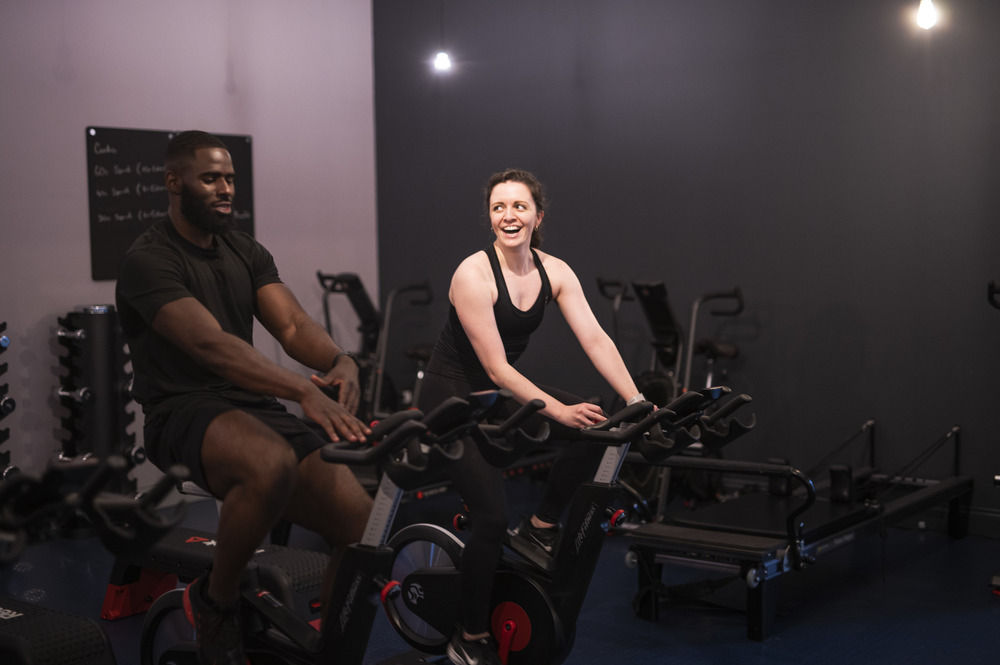
HIIT Health Benefits
- Burns calories: HIIT exercises are typically much shorter than regular training sessions, but they allow you to either increase the number of calories you burn or burn the same amount of calories in less time. Results have shown that 25–30% more calories are burnt during HIIT classes than during other types of exercise.
- Improves cardiovascular health: HIIT exercises increase heart functioning and lung capacity while decreasing blood pressure and cholesterol levels. Results have shown that one HIIT class can produce an immediate drop in blood pressure and HIIT exercises can reduce blood pressure and blood sugar.
- Increases metabolism: HIIT exercises can also serve to increase your metabolism, which leads to continuous calorie burning even after your workout is finished. Your body’s resting metabolic rate can advance with high-intensity exercise over time. Therefore, even after your workout is over, your body will continue to burn calories.
- Promotes muscle gain: Fast-twitch muscle fibres, which are far more aggressive than slow-twitch muscle fibres when it comes to muscular development and strength, require short, explosive actions (like those seen in HIIT). While HIIT might not be as effective in building muscle as weight training, it will help you to look more sculpted.
- Improve stamina: Your body becomes more used to anaerobic exercise with HIIT, which will boost your muscular strength and ability to absorb oxygen. The more frequently you attend HIIT classes, the less demanding the workout will become. HIIT can also improve your ability to work out harder and utilise oxygen more effectively.
Pilates Health Benefits
- Enhances core strength: Our core, often known as our “powerhouse,” is a collection of muscles that serves as the foundation of the body’s stability and balance. Pilates helps to build stronger core muscles, which improves flexibility and stability while lowering the risk of developing hip and lower back issues.
- Prevents injuries: Pilates ensures that your muscles will not only avoid becoming too stiff and tight but will also help them to become stronger and more flexible (further reducing the chance of injuries). Pilates is also an exercise method that can help you develop the muscles that protect your ligaments and joints.
- Reduces stress levels: Stress prevents your immune system from operating at its best, which increases the likelihood of illness. Pilates reduces stress chemicals (like cortisol) while increasing “feel-good” hormones (like endorphins) through deep, controlled breathing and an inward emphasis on stellar body awareness.
- Improves general fitness: Pilates can help to increase muscular endurance, cardiovascular fitness, and general physical fitness. With the Tempo Pilates Method, you can enjoy full-body exercise, burn more calories, gain lean muscle, and shape and tone your body all in one session. It’s the best way to start or end your day!
Pro Tip: Both Pilates and HIIT exercises can be altered to accommodate a variety of fitness levels and abilities. Speak with one of our certified trainers before beginning a new workout routine; we can help you set up the best training regimen for your fitness goals.
How to Include HIIT Into Your Training Regimen
As previously mentioned, HIIT is a popular high-intensity workout method that involves short bursts of exercise with short recoveries in between.
HIIT cross-training is super beneficial because it can help you improve your cardiovascular endurance, burn more calories, and build muscle all at once.
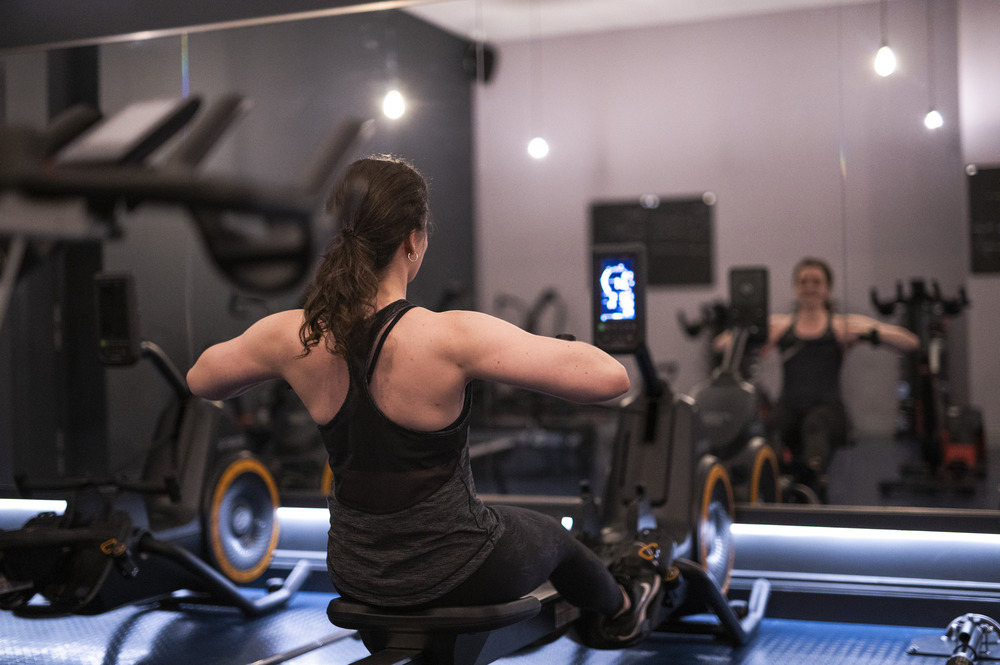
You can combine HIIT with other exercises in the following ways:
-
Use HIIT during your warm-ups and cool-downs.
Before or after your main workout, we recommend that you complete a quick HIIT routine to warm up or cool down. In doing so, you’ll be able to effectively raise your heart rate and improve the blood supply to your muscles, preparing them for the workout and/or speeding up the recovery process.
-
Combine HIIT with strength training.
Create your own cross-training program with both disciplines included. At Tempo 301, we strongly recommend exercises that are impact free but that will strengthen your muscles while increasing your heart rate and calorie expenditure between sets.
-
Combine HIIT with Pilates.
In terms of the positive effects that they both have on the body, Pilates and HIIT support and complement one another. HIIT focuses on global muscles whereas Pilates focuses on the core; therefore, when combined, they engage both big and small muscle groups. This guarantees full body attention.
Pro Tip: Start with lower-intensity exercises and gradually increase the intensity and duration of your HIIT workouts as you improve over time. This will help to prevent injury and ensure that you’re setting fitness goals that are realistic.
Also Read – Pilates Training Is For Everyone [Go From Beginner to Expert]
How to Include Pilates Into Your Training Regimen
By combining Pilates with other exercises, you can develop an excellent training regimen that addresses many different aspects of your fitness.
Pilates is a total-body workout in and of itself, so combining it with other exercises will only advance your fitness goals.
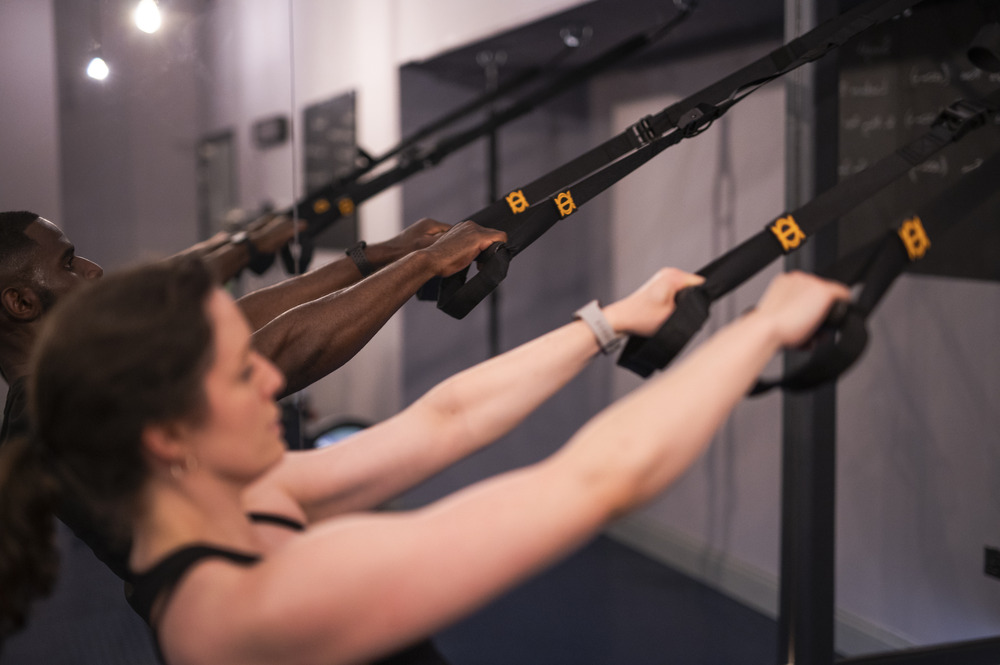
Here are some recommendations for ways to combine Pilates with other exercises:
-
Combine Pilates with cardio.
To assist with calorie burning and the development of longer, leaner muscles, we suggest that you consider a Cardio Pilates routine. This type of workout effectively tones the body while simultaneously enhancing cardiovascular fitness. Your flexibility will increase and your posture will also improve.
-
Combine Pilates with strength training.
When cross-training with Pilates, strength training is a wonderful complementary exercise. The two complement each other since Pilates helps with posture and endurance and is also a great method to exercise the body outside of weight-training sessions intended to build muscle.
-
Combine Pilates with yoga.
Your yoga practice can improve if you choose to incorporate Pilates. For instance, because Pilates develops the lower abdominal and psoas muscles, your flexibility and balance will only become better. Yoga postures that call for balance will also become easier for you to do because Pilates encourages stability.
Pro Tip: It’s important to pay attention to your body’s signals and adjust exercises as needed to suit your capabilities. Learning to breathe properly while exercising can also be a major game-changer for your routine.
HIIT & Tempo Pilates as Your Cross-Training Goals
Our expert and dedicated trainers are eager to welcome everybody who enters our Tempo 301 studios and assist them in accomplishing their fitness goals through our Reformer Pilates and HIIT sessions.
Because we understand the advantages of cross-training, we will help you to grow in confidence with your form and find a training regimen that suits your level of fitness and your long-term goals.
Every fitness level is catered for with our range of Pilates courses, from Beginners to L3 – Tempo Pilates classes, with an emphasis on injury prevention and the best training regimen to enhance your performance and health.
To get the health advantages of cross-training, we recommend that you combine your Pilates exercises with our Tempo HIIT classes.
HIIT classes are a great cross-training method for Tempo Pilates since it offers a powerful cardiovascular workout.
HIIT exercises get the job done in as little as 20 minutes, and it’s one of the easiest methods to improve both total and aerobic endurance.
The two go well together because Tempo Pilates improves the core, whereas HIIT concentrates on global muscles and fitness sustainability.
However, please kindly take note that our HIIT classes are only available at our Tempo 301 London SE17 | Elephant Park Studio.
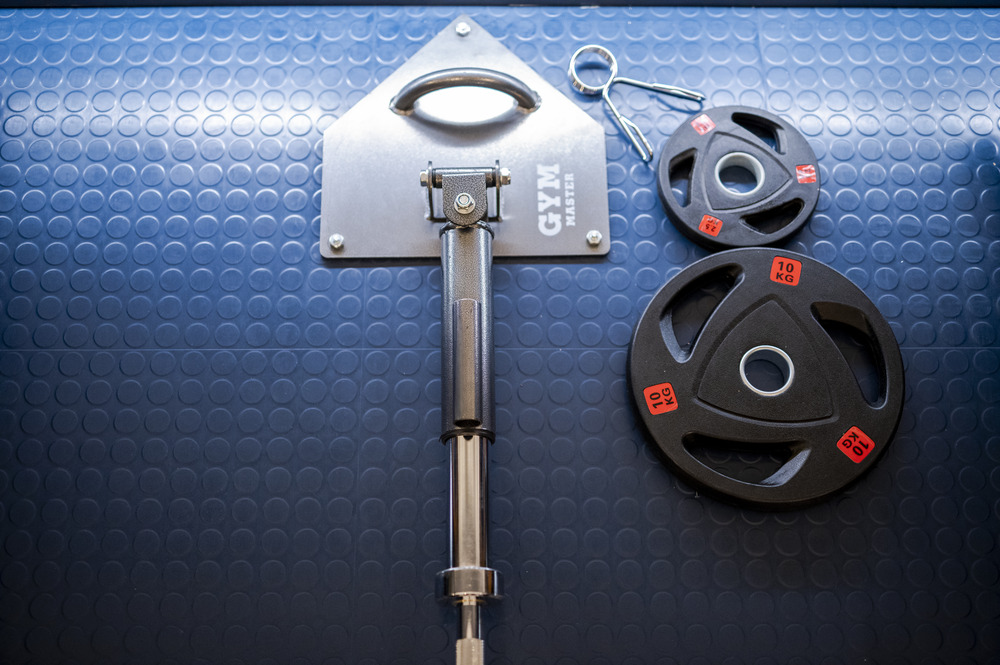
Our Final Thoughts
Cross-training offers a number of benefits regardless of your training objectives.
It can help you lose weight more rapidly, lower your chance of injury, increase your general fitness, and make it easier for you to stick with your exercise regimen.
Pilates and HIIT programs make the perfect cross-training exercise combination.
The results will be worthwhile if you carefully follow the directions, just as with any good recipe!
Schedule your Pilates and HIIT classes today to enjoy the cross-training benefits.
For more information, please feel free to contact us or visit one of our studios:
LONDON SE17 | Elephant Park
Call/Text: 07881 746 243
LONDON E8 | Hackney
Call/Text 07563 578 165
LONDON E1 | Shoreditch
Call/Text 07798 586 925
